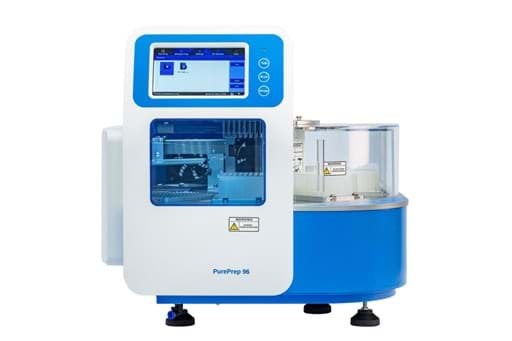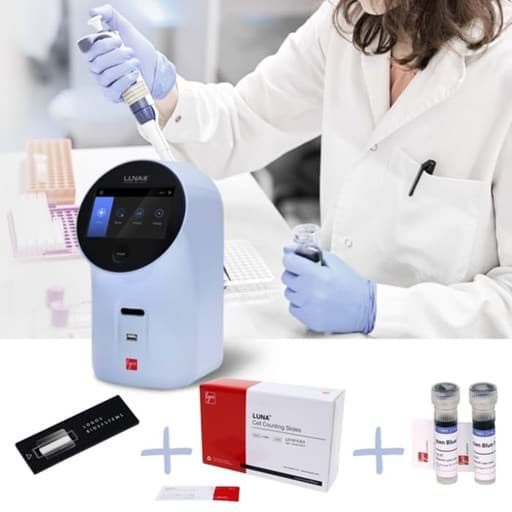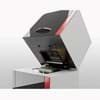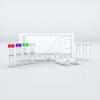How to detect unwanted DNA in food samples reliably

How to detect unwanted DNA in food samples reliably
reliable detection of porcine DNA in fresh and processed food
Learn more about
In summary
- Robust Identification of Pork DNA in Food Samples
-
The identification in food samples
- Detecting the tiniest pork DNA amounts in food samples
- Detection range of the InnuDETECT Pork Assay
- Analytical specificity in different food sample types
Introduction
Robust Identification of Pork DNA in Food Samples
Analytical molecular methods are currently recognized tools for determining DNA in foods. These methods must meet specific quality criteria to gain reliable results that are convincing enough to compare them between laboratories. The TaqMan®-based innuDETECT Pork Assay, a currently recognized tool for determining DNA in foods, is highly sensitive in detecting pork species. Further validation studies were performed to establish the extended performance and characterize the innuDETECT Pork DNA Assay.
Materials and Methods
The identification in food samples
Samples and Reagents
For reference 0.1% (w/w) pork in beef meat standard (Eurofins), genomic DNA of Sus scrofa domestica with a concentration of 100 copies/μl (Eurofins) and an in-house designed plasmid with synthetic pork DNA insert (GeneArt) to be used as positive control (available as innuDETECT Animal Quantification Tool (845-IDF-0140100)) were applied using the innuDETECT Pork Assay (845-IDF-0010096).
Instrumentation
The analysis was conducted on the real-time PCR platform qTOWER³ from Analytik Jena, the CFX96 from Bio-Rad, and the Step-One Plus from ABI to allow performance assessment for the assay.
Procedure
To validate the innuDETECT Pork Assay and to demonstrate that the developed method corresponds with the required performance criteria of detection tests, the 0.1% (w/w) pork in beef meat standard was extracted using the innuPREP DNA Mini Kit (845-KS-1040250). The protocol is based on spin filter nucleic acid extraction in conjunction with patented chemistry based on a combination of chaotropic and non-chaotropic salts (Dual-Chemistry Technology®). Further analysis of extracted nucleic acids was performed as described in the instructions for the use of the innuDETECT Pork Assay. Target amplification as well as detection was performed by real-time PCR analysis using the FAM channel for the target and the HEX channel for internal control.
- The analytical sensitivity was ascertained by analyzing clarified samples with minimal amounts of DNA. Extracted nucleic acids from 0.05% pork in beef meat, one genome equivalent of genomic DNA of Sus scrofa domestica, and 10 copies of synthetic plasmid DNA served as templates. At least 30 replicates of each sample type were analyzed, and a minimum of 95% should be detected as positive.
- The linear range for the innuDETECT Pork Assay was determined by analyzing dilution series of porcine DNA ranging from 3x100 – 3x105 genome equivalents per reaction as well as plasmid DNA ranging from 3x100 – 3x107 copies per reaction.
- The robustness was tested for the PCR setup. At least 10 samples from 0.1% pork in beef meat were amplified using different PCR instruments, with varying annealing temperatures and with deviations in the MasterMix compilation.
Recognizing
Detecting the tiniest pork DNA amounts in food samples
The food technician must establish different performance parameters to apply a detection kit for routine analysis. Comparative analysis was performed for Limit of Detection, amplification efficiency as well as robustness. The technician also conducted the application of different food samples.
In order to determine the analytical sensitivity of the innuDETECT Pork Assay, different starting materials with minimal concentrations of porcine DNA per sample (n=30) were analyzed. The first results demonstrate the minimal detection level of 0.05% (w/w) pork in beef meat. Furthermore, positive results for all replicates (30/30) were determined. In addition to that, less than one genome equivalent per reaction could be verified using the innuDETECT Pork Assay. Pork DNA fragments are sufficient for positive test results, as was shown with the amplification of synthetic plasmids. Using 10 copies of porcine DNA per reaction, 96% could be detected positively. All results are summarized in the table below.

Conclusion
Our solution to analyze food samples
Real-time PCR has been established as a reliable, precise, and fast application for animal species identification. Innuscreen offers a solution for the detection of porcine DNA by applying the innuDETECT Pork Assay on the Analytik Jena qTOWER3 as well as on other qPCR instruments. Different performance criteria were analyzed to validate the detection assay. The robust innuDETECT Pork Assay convinced with a limit of detection ≤ 0.05% (w/w) pork in beef meat. In addition, the assay successfully detected porcine DNA in fresh and processed food. For other food samples we offer various innuDETECT kits.
qTOWERiris Real Time PCR system, incl. color module 1
innuDETECT Pork Assay - 24 reactions
innuDETECT Halal Multiplex Assay - 24 reactions
Our news

Multi Tissue Center ETB-BISLIFE ready for further expansi...
We are pleased to share this article, which was published in the September issue of LabVision. This article was written in conjunction with our collaboration...

Innuscreen introduces PurePrep benchtop systems for autom...
Discover the PurePrep family for quick and effective DNA/RNA extraction.

Logos Biosystems launches sustainable cell counting package
This article discover eco-friendly solutions for cell counting
Detection range of the InnuDETECT Pork Assay
The linear range of the detection assay was determined by analyzing porcine DNA ranging from 3x100 ‒ 3x105 genomic equivalents per reaction and synthetic plasmid ranging from 3x100 – 3x107 copies per reaction using the qTOWER3, the CFX96, and the ABI Step-One Plus. Obtained results, shown in Figure 1, cover a linear range over 7 log10 steps. Based on the Ct value mean, the slope of the regression line was used for the determination of the PCR method efficiency. For qTOWER3, an efficiency of 94% could be detected using the positive control plasmid as a template. For qualitative singleplex qPCR methods no criteria of acceptance are defined. By the measure of a quantitative PCR method, the PCR efficiency should range from 90 – 110%. Meanwhile, the innuDETECT Pork Assay reaches an optimal result (Broeders et al., 2014). The calculated linearity R2 = 0.9955, an additional criterion for method validation (R2 ≥ 0.98), emphasizes the assay performance.
Analytical specificity in different food sample types
Fresh and processed food was analyzed using the innuDETECT Pork Assay. For declared mixed, minced meat pork DNA could be detected. The comparative analysis of halal and non-halal marshmallows was also performed. It was demonstrated that the halal-certified marshmallows are free of porcine DNA. Besides proof of principle the specificity of the innuDETECT Pork Assay was investigated. Therefore, kosher beef with and without contamination of pork DNA was utilized as sample material to verify the workflow. Even using contaminated knives for sample preparation is sufficient to get false positive results in the case of the innuDETECT Pork Assay.Pork assay analyzes different fresh and processed foods. Left: samples and results; Right: Amplification plot.



